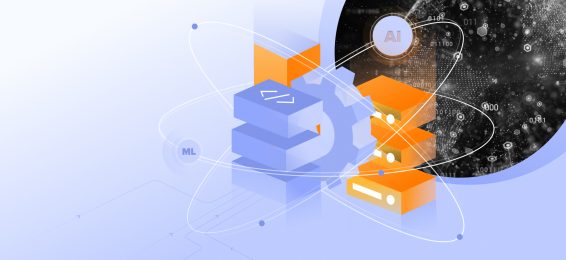Key characteristics of LLMs
1. Transformer architecture
Most modern LLMs are based on the Transformer architecture, first introduced in the paper Attention Is All You Need (Vaswani et al., 2017). The key components of this architecture include:
- Self-attention mechanism: enables the model to focus on different words in a sentence, even those far apart, improving contextual understanding.
- Positional encoding: helps the model recognize word order since transformers do not process text sequentially like RNNs.
- Feedforward layers: non-linear transformations applied to enhance feature extraction.
- Multi-head attention: allows the model to analyze different parts of the text in parallel, leading to better representation learning.
2. Pretraining and fine-tuning
LLMs undergo two main phases of training:
- Pretraining: the model is trained on massive datasets (e.g., books, websites, research papers) using self-supervised learning, often through objectives like:
- Masked language modeling (MLM) (e.g., BERT) – The model predicts missing words in a sentence.
- Causal language modeling (CLM) (e.g., GPT) – The model predicts the next word based on previous words.
- Fine-tuning: the pretrained model is adapted to specific tasks (e.g., medical text generation, legal document analysis) using supervised learning or reinforcement learning from human feedback (RLHF).
3. Parameter scale
LLMs are characterized by their large number of parameters—the internal variables learned during training. Examples include:
| Model | Year | Parameters |
| GPT-2 | 2019 | 1.5 billion |
| GPT-3 | 2020 | 175 billion |
| GPT-4 | 2023 | Estimated >1 trillion |
| PaLM-2 | 2023 | 540 billion |
| LLaMA 2 | 2023 | 7B, 13B, and 65B variants |
Larger models generally improve performance but also require significant computational resources.
4. Context window
The context window refers to how many tokens (words/subwords) an LLM can process at once. A larger context window improves the model’s ability to understand long-form content. Examples:
- GPT-3.5: ~4K tokens
- GPT-4: ~8K to 128K tokens (depending on version)
- Claude 2: 100K+ tokens
Applications of LLMs
1. Natural Language Processing (NLP) tasks
- Text generation: generating human-like text for articles, stories, and reports.
- Machine translation: translating between languages (e.g., English to French).
- Sentiment analysis: understanding emotions in text.
- Summarization: condensing long articles into key points.
- Text classification: categorizing emails, reviews, and documents.
2. Conversational AI
- Chatbots and virtual assistants (e.g., ChatGPT, Bard, Claude) that interact with users naturally.
- Customer support automation in businesses to handle inquiries efficiently.
3. Code generation and debugging
- LLMs can generate and debug code (e.g., GitHub Copilot, Code Llama, StarCoder).
- Used for code completion, explanation, and optimization.
4. Healthcare and biomedical research
- Assisting doctors by summarizing medical papers.
- Generating clinical notes from patient conversations.
- Drug discovery by analyzing biomedical literature.
5. Content creation and creative writing
- Generating marketing copy, blog posts, and product descriptions.
- Assisting in scriptwriting, storytelling, and brainstorming.
6. Education and research assistance
- Acting as a tutor for students in various subjects.
- Helping researchers summarize papers and generate ideas.
Challenges and limitations of LLMs
Hallucinations (Misinformation)
LLMs can generate factually incorrect or fabricated content (a phenomenon known as hallucination), which makes them unreliable for tasks requiring high accuracy, such as medical or legal applications.
Bias and ethical concerns
- LLMs inherit biases from the data they are trained on, potentially leading to stereotypes and discriminatory outputs.
- Ethical concerns arise regarding misuse, such as AI-generated deepfake text, misinformation, and propaganda.
Computational and environmental costs
- Training large models requires massive computational power, leading to high energy consumption and carbon footprint.
- Running large models on edge devices (e.g., smartphones) remains challenging due to their size.
4. Lack of deep insight
- LLMs do not understand text in a human way; they rely on statistical patterns rather than real-world reasoning.
- Struggles with logical consistency and common sense reasoning in certain scenarios.
5. Security and Privacy Issues
- Data leakage: LLMs may inadvertently memorize sensitive information from training data.
- Jailbreaking risks: users can manipulate prompts to make LLMs generate harmful or unethical content.
Large Language Models (LLMs) are a major breakthrough in artificial intelligence, powering NLP applications, chatbots, coding assistants, and more.
However, they also come with limitations like hallucinations, bias, and high computational demands.
Future advancements will likely focus on making them more efficient, multimodal, and ethically aligned, ensuring responsible AI deployment in real-world applications.



